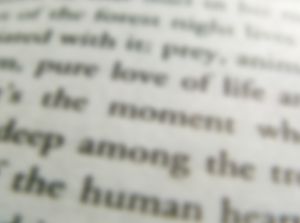Presbyopia (aging eyes)
As we age, our bodies undergo many significant changes. One such change that often causes concern for people is the gradual loss of near vision when we reach our 40s. This normal and unavoidable effect of aging is called presbyopia or “old eyes”.
Symptoms
The symptoms for presbyopia are familiar to anyone over age 45. At first, you will notice that after reading for a short time, the words seem to run together. After a brief rest, you can again read for a short time before it happens again. Over time, reading small print – such as numbers in the phone book, the box scores in the newspaper, or items on a menu – becomes harder and then impossible. You may notice that if you hold reading material farther away, the words gain sharper focus. As presbyopia develops, you may find you hold your newspaper farther and farther away until, at last, your arms aren’t long enough to compensate.
Causes
Presbyopia arises due to changes in the lens of the eye. When we are young, we can easily change focus on objects that are nearby or far away. When we are young, we can easily change focus to look at objects that are nearby or far away. This is because our lens is young and soft and can quickly and easily change its shape to accommodate between distance and near focus. But as we age, the lens becomes stiff and can no longer easily change its shape. As a result, we can no longer adjust our focus to see up close without some help. Most commonly, this starts around age 42, but can come on a few years earlier in some people and show up later in others.
Treatment
Help for presbyopia comes in the form of glasses. If you do not use glasses for distance vision, then a pair of reading glasses is the easiest solution. Reading glasses are necessary only for up-close tasks such as reading or sewing and must be removed to see clearly off at a distance. Reading glasses come in different strengths. Usually weak reading glasses (in the range of +1.25 to +1.50 diopters, or focusing units) will work well when presbyopia symptoms are just beginning, and stronger glasses will be needed every few years until presbyopia stops getting worse, usually in your late 50’s to early 60’s. Once presbyopia stops progressing, most people end up with reading glasses in the range of +2.50 to +2.75 diopters. If you do use glasses for distance vision even before presbyopia starts, the solution for you will involve bifocals. Bifocals are glasses that have your distance prescription in the top of the lens and your presbyopic reading prescriptions in the bottom of the lens. The strength of the bifocal part of the lens will have to be increased over the years as presbyopia progresses, just as with reading glasses.

